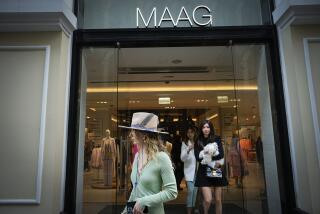Russia Seeks to Ease Fears of Curbs on Capital Outflow
- Share via
MOSCOW — Russia’s new prime minister went face to face Saturday with a phalanx of dour American business executives and tried to stamp out persistent rumors that he will restrict money flows out of his financially crippled country.
“None of these ravings . . . match reality,” Prime Minister Yevgeny M. Primakov insisted.
The government has repeatedly denied news reports that, as part of its still-unfinished economic rescue plan, it will try to block the export of dollars--which would mean that foreign companies’ profits would be stuck in Russia.
In Soviet times, hard currency could not be taken out of the country.
However, currency controls have been all but nonexistent in recent years, and capital has flown out of Russia far faster than it has come in. During September alone, $2.5 billion took flight, the Central Bank estimated Friday.
“The [investment] climate will be more favorable for you than before,” Primakov told the executives. “We will do everything to resolve the problems you have raised . . . because we understand we need an inflow of foreign capital.”
The rumors have been fueled in part by the promotion of several Soviet-era bureaucrats to top jobs in a new Cabinet.
The most prominent is First Deputy Prime Minister Yuri D. Maslyukov, who once headed the Soviet central planning agency.
The business newspaper Kommersant recently published what it called a draft of the government’s economic rescue plan.
The measures included a proposal to restrict to $500 the amount of cash a person could carry out of the country. However, the draft said there would be no restrictions on noncash transactions, such as wire transfers or bank drafts.
Nonetheless, Primakov’s choice of Maslyukov and apparent willingness to consider some Soviet-style policies have put many of the foreign firms here on edge.
The U.S. Chamber of Commerce says about 100 members who took part in a recent survey reported losses totaling half a billion dollars since August, when the government defaulted on its debt payments and devalued the ruble. That triggered a banking crisis that has frozen companies’ assets in shaky Russian banks and prompted many investors to start pulling out.
More to Read
Sign up for Essential California
The most important California stories and recommendations in your inbox every morning.
You may occasionally receive promotional content from the Los Angeles Times.













